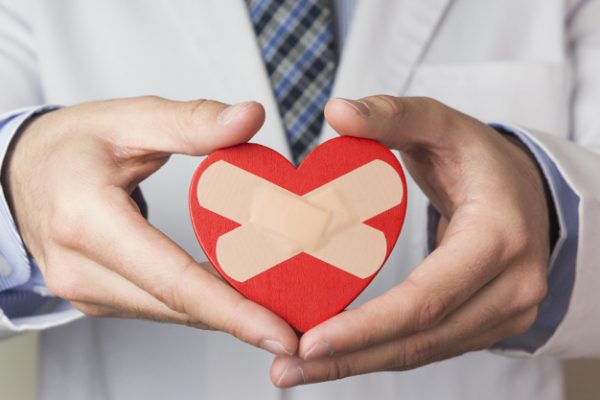
Basic rules in first aid to stop bleeding
Basic rules in first aid to stop bleeding
10 Rules in first aid to stop bleeding
Bleeding is one of the most famous injuries that we see, it’s also one of the most serious injuries that threaten life if a lot of blood is lost, and the goal of the paramedic here is to stop the bleeding as soon as possible so that the injured person does not enter the stage of shock, then loss of consciousness and then death.
First aid in case of bleeding:
- We must first establish an important rule, which is that if we are not in an emergency, the paramedic is supposed to wash his hand and possibly sterilize completely before dealing with the injured, but if the bleeding is life‑threatening, the risk of continued bleeding is greater than the risk of infection, so stopping the bleeding to safe the life comes first, and then afterwards dealing with the infection with anti
- As a general rule, when trying to stop any bleeding by applying pressure, the place of your pressure is always either directly above the wound or between the heart and the wound so that you can stop the blood supply to the area from which blood is leaking.
- The third rule is that your pressure on the bleeding wound must be firmly and long enough to form the thrombus with which the bleeding stops, and this period is approximately 8-10 minutes.
- If the wound is in one of the limbs, the best is to raise this limb at the same time that you press on the wound so that the flowing blood column is opposite to gravity, so the flow decreases, but the rule here is that before lifting the bleeding affected limb, you must make sure that there are no bone fractures in this limb.
- If the wound is small, press firmly with your fingers and your index finger on the wound as we said for at least five minutes and preferably wait for 8-10 minutes until the thrombus forms.
- If the wound is large, it is not enough to press with the index fingers and fingers, but the pressure should be on both sides of the wound with all of the hand, tightly but also gently.
- When the flow of blood from the wound decreases, press the wound bandage on the wound and then tie it (if there is a bandage part available – and if there is no bandage available use any ligament or any cloth and do your best to choose a clean piece if conditions permit)
- One of the important rules in the principles of stopping bleeding is that if the bleeding is continuous, do not remove the fixed bandage on the wound from its place to put another new bandage, but put another new bandage on top of the first bandage and tie it well also.
- It is also an important rule that the confining ligament should not be firmly attached that it prevents blood from reaching other parts of the body and beyond the bleeding spot.
- You can know how tight the confining ligament is and whether it actually affects the blood supply to the limbs through what the injured will tell you if he is conscious, as he will complain of numbness in the limbs at the fingers of the hand or foot, but you must ask him yourself about this matter because he may not tell you in the belief that this is supposed to be like that, and so you have to take the initiative to ask the injured about the sensation of numbness in the fingers of the tied limb, and if the injured person cannot respond to you, you can make sure by yourself by pressing on the nails of the tied party until the nail changes color to white and then remove your hand from the nail, as it is normal for the red color to return again, which is evidence of the arrival of blood to the end of the limbs, but if the white color continues, it means that the blood has not reached the end of the limbs, meaning that the ligament is tight and strongly tied.
Additional tips when dealing with bleeding
There are 3 things to be sure of:
- Both of you (paramedic and injured) are in a safe position.
- The patient’s respiratory tract is open and the lungs are functioning normally.
- The heart is functioning normally.
- The ideal bandage that can be used is made of medical gauze, which has the property of absorbing liquids and non-adhesion to the wound.
- In cases where medical bandages are not available, an alternative material can be used, provided that it is clean and has the property of non-adhesion to the wound.
- You can use alternatives such as clothing fabrics, towels or bed linen as bandages for bleeding wounds.
- Tissue paper or toilet paper is not a good choice to use as bandages, because these materials crumble when wet and stick to wounds, which may lead to wound contamination and inflammation and make cleaning wounds later complicated.
- If there are no clean alternatives, stopping bleeding is the first priority, so find the best alternatives under available conditions and use them to stop bleeding.
- The ligament is a material used to tie the bandage over the bleeding wound.
- There are special wraps designed to tie bandages over wounds,
- But in the absence of these special medical wraps, other means of tying can be used, such as ties (kravat), headdress or even leather belts.
- When tying bandages over wounds, make sure not to compress them excessively because this will lead to the blocking of blood circulation from the affected organ of the body.
When should I seek medical advice?
Medical advice should be sought in the following cases:
If the injured person has bled for a long time, the ambulance must be called, the ambulance crew will give oxygen to the injured person, and this crew has other methods to stop the bleeding if attempts to stop the bleeding by direct pressure fail
- If the bleeding from the wound does not stop.
- If the wound is longer than 3 cm.
- If the wound is deeper than 2 cm.
- If the wound is forked or diverging.
- If the wound is dirty or has a foreign body inside it.
- If the wounded person has not received a tetanus vaccine or vaccine within the past five years.
- If the bleeding is from the ear, this type of bleeding is considered very dangerous because the bleeding in this case is caused by a fracture of the skull. Do not try to stop bleeding from the ear. Call an ambulance immediately..




